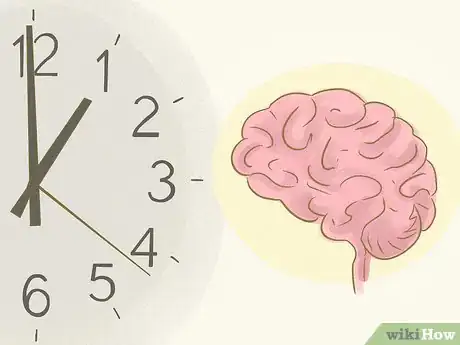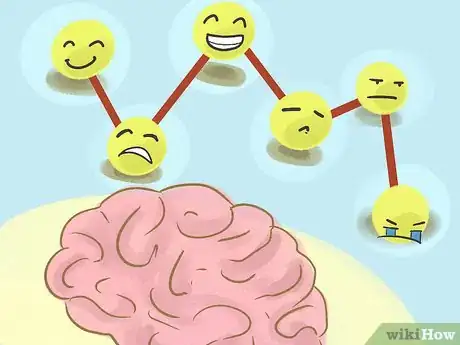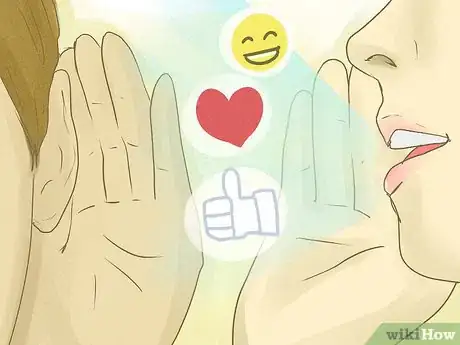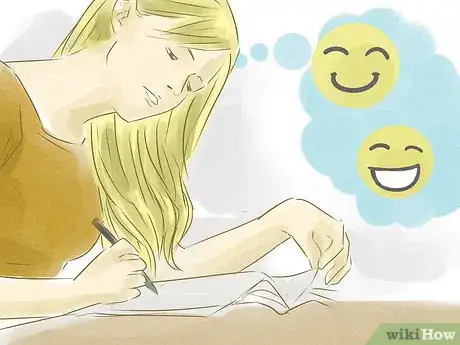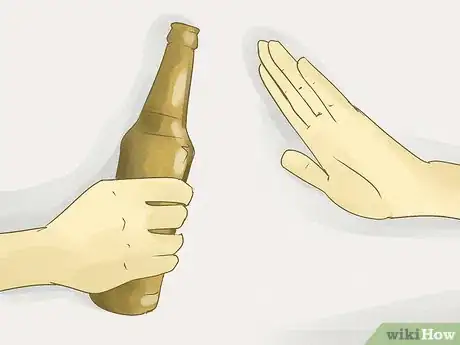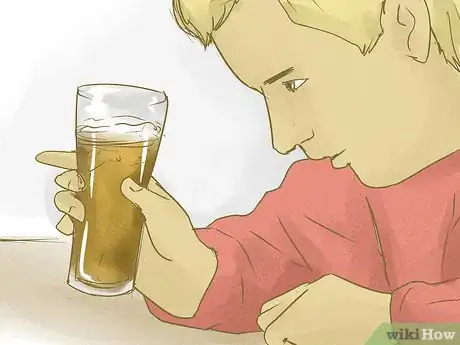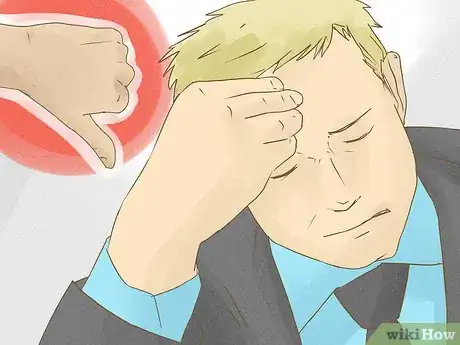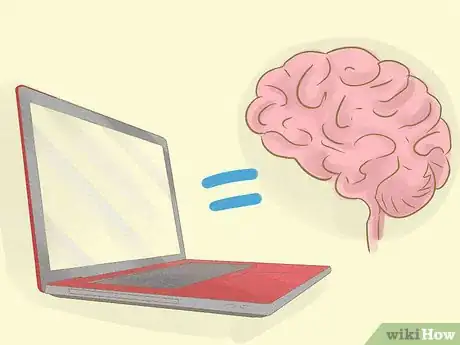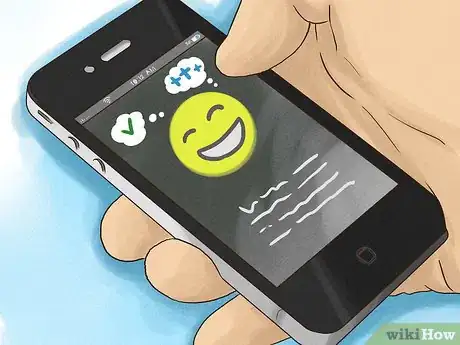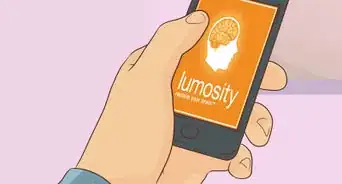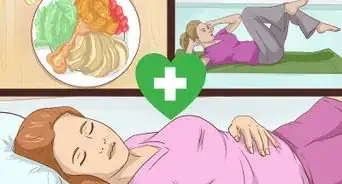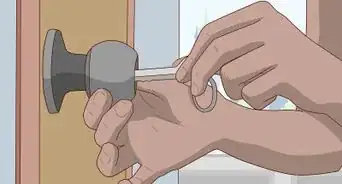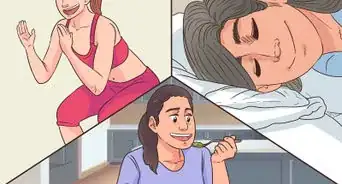wikiHow is a “wiki,” similar to Wikipedia, which means that many of our articles are co-written by multiple authors. To create this article, 19 people, some anonymous, worked to edit and improve it over time.
wikiHow marks an article as reader-approved once it receives enough positive feedback. This article received 15 testimonials and 93% of readers who voted found it helpful, earning it our reader-approved status.
This article has been viewed 257,452 times.
Learn more...
If you have a desire to change the way you think and behave it is completely, 100% possible. The brain is constantly forming new connections and molding itself into how you're telling it to operate. By practicing self-awareness and staying mindful, as then you can rein in those negative thoughts and destructive habits and start right now being a better, more positive you.
Steps
Changing Your Thought Patterns
-
1Begin to monitor your thoughts on a daily basis. The beauty of human evolution is that we've developed two selves: the primal one that does and the evolved one that monitors. You are able to observe yourself and your thoughts 24/7. With every thought that raises a red flag, stop for a second and think about it. Was it negative? Destructive? What triggered it? Does it seem logical? Addictive? You will notice a pattern to your thoughts as you begin practicing self-awareness.
- Write down your thoughts as they spring up. This will make it easier to see what your pattern is. They could be self-deprecating, pessimistic, worrying, anything. It's also a great way of realizing the ridiculous chatter in your head and getting rid of it, too.
-
2Define your thought patterns. After a week or so, take a hard look at that pattern. Maybe most of your thoughts are negative, you are critical of yourself or others, or you experience unnecessary thoughts that aren't important or beneficial to you. For each person it will be different. Once you identify this pattern, you can go about stopping it.
- When you have a realization about yourself, it can literally stop you in your tracks – and that's when the change can begin. After all, you can't get to a certain place if you don't know where you're going.
Advertisement -
3Realize that everything is a part of a larger cycle. Many of us are guilty of thinking that our feelings lead to our actions, and that's it. We're powerless and can't help but feel these things and act these ways as a result. In reality, that couldn't be further from the truth.
- Your beliefs and thoughts determine your feelings, which in turn determine your actions, which in turn give you life results. These life results shape your beliefs and thoughts, which determine your feelings...and the cycle goes on from there. When you think of it as a cycle it's easier to see that even just changing one of these factors can overhaul the system.[1]
- The other part of that belief up top that isn't right is that we're powerless. No, no, no – in fact, you're the only one that has the power. These thoughts, behaviors, these life results, they're all yours, and you can change them. Change just one even, and the rest will fall into place.
-
4Create a space between your thoughts and actions. This cycle is a cycle, sure, but it can be slowed down. When you start feeling that pattern creep up, stop and breathe. Try not to be reactive. How would you prefer to react? What positive thought can you put in your head instead?
- For example, let's say you're watching TV and you see an ad with a beautiful woman. You think to yourself, "I could never be her," or "I could never get her." Stop for a second, and finish that thought better. Think, "But I have good qualities x, y, and z," or "I'm going to use this as motivation to start working out and feel better about myself, because I've decided to seek out happiness, not negativity."
- Realize that for all your actions and thoughts you are getting some reward. Worrying constantly? You probably feel like you're covering your bases or not getting your hopes up. Deflating your sense of self? It probably feels safe being down in the dumps, so your hopes can't crash down around you. Think about what you're getting out of your thoughts? Is what your getting really worth it?
-
5Be mindful of the words you use in your mind and what you say to others. Your words can hurt people – including yourself – and this can only have a negative impact upon yourself and your resulting behaviors and thoughts. If they seem to crop up, tell yourself to stop. Just stop. Divert your attention to something more positive that keeps you on track.
- If you express positivity and love, that is what you will receive in return. It benefits all and creates good energy. If you go in thinking something is impossible, it likely will be. If you open your mind and think you are capable of whatever you're putting your mind to, you just may be.
- Sometimes we all get stuck playing tapes in our head. That tape may say, "I'm ugly," or "I'm worthless," or "I'm depressed," or any number of unhelpful things. Hit stop on that tape and put in a new one. What's this one say? Isn't it a breath of fresh air? Always be mindful of that tape and if it slips back in. And remember: you can always take it out.
-
6Choose your reactive behaviors. As a child you are told to think, behave and to adopt certain belief systems which often shape the type of person you become. Some fears and insecurities you developed can also be carried through into your adulthood. Often, we get stuck into action-reaction patterns, not realizing we could interpret the situation and react any number of ways. When you have a negative reaction, this is an opportunity to assess it. If something infuriates you, why? Would other people you know react the same way? How would they react differently? How would they react better?
- Ask yourself why you react in this way. Are you getting anything out of it? What's a way you could react instead? Choose to develop your own thought patterns and beliefs that ring true to who you really are, want to be, and are actively working toward.
-
7Develop new thoughts to create these new, positive habits. You've identified your bad thoughts, you've stopped them, and you've replaced them with good ones. Now you just have to be persistent and repeat these new thoughts as often as possible. It will become habit, just like your old thoughts became habit. As long as you stay mindful and thinking it's possible, it will happen. That's what brains do.
- You may find that it helps to keep a journal, meditate, and to talk about this practice with your loved ones. It makes this whole process more concrete, tangible, and a part of your life – not just some crazy whim you have once in a while, when you remember. You'll probably find that other people are inspired by resolve and wish to imitate your dedication to self-improvement.
Changing Your Habits
-
1Control the urge. Sometimes there are not just thoughts that need to change; there are also bad habits and addictions (which are sometimes one in the same, really). If you have a habit you need to break, whether it's eating too much or being dependent on a drug, start deconditioning yourself by exposing yourself to your trigger and then resisting. It'll be tough, but it'll get easier with each time. And in this manner, you're controlling it. When you control it, you feel a lot better.
- Let's say you're trying to quit overeating. In this example, you're at home, and it's around the time you would normally snack. Expose yourself to an aroma or a picture of a food and don't crave. It can be for 30 seconds or it could be for 5 minutes, whatever you think you can handle.
- The important aspect here is to do it in a normal situation. Plenty of addicts go to rehab and do fine, but eventually relapse into the bad habits. Keep your conditions as normal as possible to make them the most effective.
-
2Expose yourself to your triggers in different circumstances. If you're an alcoholic who's trying to quit, it's a good idea to "practice quitting" in a number of different environments and in different situations. Take it one step at a time. Get home from work and don't have that glass of wine. In time, that urge will fall away. Then, move to your local bar, and resist there. That'll become normal, too. Next step, parties. You need to face the trigger in whatever form it can take and learn to conquer it.
- It's a good idea to do it in different intervals, too. Sometimes cravings will come on stronger, and those are the ones that present the most risk. But if you vary up your reconditioning sessions, your body will start resisting the urge at all times, not just cyclically.
-
3Go through the motions, while still resisting. Once you've gotten this far, you're almost home free. Now it's time to essentially mime your habit and still not do it. An alcoholic might sit at a bar, pour a drink, and not drink it. An over-eater might cook a meal for their family and watch them enjoy it. When you hit this stage, you officially have power over your mind and your habit. Congratulations!
- Going through the motions makes them much more real than just thinking about the craving or viewing it. It's interactive on a completely different level and requires an intense amount of willpower, but it's totally and completely possible.
-
4Come up with a positive, alternative response. You can't just take something and replace it with nothing. Your brain needs some type of reward, after all. Heck, you deserve it after all this hard work. So while you're sitting at the bar not drinking, have your favorite non-alcoholic drink. Not eating? Try a refreshing iced tea. Traffic jam and you're not freaking out? Pop in your favorite CD and jam. Anything that makes you feel good (but isn't a negative habit) will work.
- This can go for thoughts, too. Let's say your boss yells at you and your natural response is to either cry and freak out or get very, very angry. Instead, you do something you enjoy. You take a walk, call up a friend, or start reading your favorite book. Eventually, anger won't be a response anymore. Your brain just won't recognize it because you've rendered it extinct. Now, it's this new, positive thing you do. You win.
-
5Meditate. Though it may not sound like your cup of tea, the benefits of meditation are pretty incredible – and they definitely make it easier to be more mindful and self-aware.[2] What's more, they also help you stay calm and focused, making this whole positivity thing much, much easier. Those old habits may fall by the wayside when your brain is in the right place.
- Not into meditation? That's okay. What calms you and centers you? Reading a good book? Playing video games? Cooking? Then do that. As long as it puts you in that metaphorical zen-garden type of place, it's good.
Making Brain Reprogramming Work for You
-
1Realize that there's no value in negative thoughts. "Wanting to diet" is one thing, but believing that your current eating habits aren't working is another. It's pretty clear to see that the person who "wants to diet" isn't going to get anywhere. On the other hand, the person who earnestly believes that their current eating habits aren't working likely will see success. To actually reprogram your brain, you have to honestly believe that negative thoughts and habits hold no value to you. When you believe this, better actions will follow.
- You probably know that negative thoughts lead to negative actions and negative patterns. They cloud the silver lining of life, and just seem to cultivate unhappiness. It shouldn't be hard to see they have no value, right? Where do they get you? Where do they get any of us?
-
2Think of your brain as a computer. Your brain is plastic and totally moldable.[3] That's a fact. Neuroplasticity, or brain plasticity is the term for your brain changing as it has new experiences and new thoughts. In short, your brain is like a computer. It takes information in and uses it. You believe in the power of your computer, so you should believe in the power of your brain, too.[4]
- Another good reason to think of your brain as a computer is because it helps you see that any number of outcomes are possible at any given time. You input some information into your brain (like you would a computer), it sorts through it (like a computer does), and it comes out with a solution (like a computer). However, if you change the way you sort the information or how the information comes in or even what information comes in, you'll get a different result – just like a computer. Think outside of the box and you may come up with a completely different operating system. One that is way better than the previous system you were running on!
-
3Be convinced yourself, without any doubt that you see change. This goes hand in hand with the idea that negative thoughts hold no value. Your mind has to be in the right place for your brain to start changing, or being reprogrammed.[5] After all, "I want to lose weight" and "I believe I can lose weight" are two totally different thoughts. In short, you have to believe in yourself. You are capable of change. And you'll get it done, too.
- This belief can help you get started on the positive thinking train. When you believe that something is possible, you will see more opportunities in front of you. A light sort of clicks on, illuminating your world in a golden glow. All of a sudden, things are brighter. Things are looking up. You start to believe that you can do this, and then you do!.
-
4Challenge every thought that comes into your head. As you get better and better at this brain reprogramming thing, start taking your thoughts and challenging them. Is what your thought or belief? Is it your thought or was it handed to you? If you come up with thoughts that are just beliefs and that aren't yours, challenge them. What's a better thought? What is a more efficient thought? What is a more positive thought? Which thought of others would get you closer to being who you want to be?
- Our cultures tend to "grow us up" in specific ways. We're taught to think, learn, act, and generally operate in specific, acceptable ways. It's up to you to take that neocortex of yours (your highly-evolved brain) and put it to work. What actually is best for you? What goes with your values?
-
5Get the app for that. There's an app for everything, and that includes positive thinking and brain retraining. Stress-Free Life and I Can Do It are just two examples of technology that can help to keep your mind in the game and firing on all motivation, positive cylinders.[6] If writing in a journal doesn't appeal to you, this may be the next best thing.
- We all need little shortcuts to get us to our best selves. Whether it's an app, a self-help book, notes on our fridge, or a journal, they all can help us to keep us in line. If you really want to be successful at reprogramming your brain, it's a good idea to look into more tangible things to keep on the right track.
Warnings
- Change can take weeks, months, or even years, but if you are committed, it will happen.⧼thumbs_response⧽
References
- ↑ http://www.huffingtonpost.com/michelle-may-md/reprogram-your-brain_b_5515443.html
- ↑ http://www.mayoclinic.org/tests-procedures/meditation/in-depth/meditation/art-20045858
- ↑ http://psychology.about.com/od/biopsychology/f/brain-plasticity.htm
- ↑ http://www.huffingtonpost.com/daniel-fein/how-i-reprogrammed-my-bra_b_1930697.html
- ↑ http://www.alwaysgreater.com/achievements/how-to-reprogram-your-mind-to-think-positive
- ↑ http://www.mindbodygreen.com/0-8647/5-ways-to-retrain-your-brain-into-a-positive-powerhouse.html
About This Article
To reprogram your brain, spend a week writing down your thoughts as they pop into your head. After the week has passed, analyze the results and look for trends. For example, you might find you are overly negative, too critical, or maybe just unsure of yourself. Then, decide how you would like to think instead and practice consciously replacing negative thoughts with more positive ones. If you find yourself thinking "I'm not good enough," make a mental list of your good qualities. Keep doing this until it becomes natural. To learn how to change your habits, keep reading!
